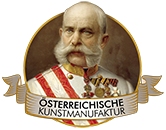James Abbott McNeill Whistler was an American artist who worked primarily in the United Kingdom. His birthplace in Massachusetts is now a museum dedicated to him. His father was a talented train driver and the family moved to St. Petersburg in 1842, because of a good job offer. Whistler struggled as a child with irascible fits, bouts of illness, as well as periods of extreme fatigue - drawing helped him stay alert. He received private art lessons and attended the Russian Academy of Art at age eleven. In 1844 he met the Scottish painter Sir William Allan, who called him a "rare genius." His brother-in-law, surgeon and painter Sir Francis Seymour Haden, spurred him on to a career in painting and gave him his first set of watercolors. After his father's death, the family returned to the United States and Whistler applied to the United States Military Academy, where, however, he became known more for his sarcastic comments and dislike of authority. However, he did learn cartography there, which helped him land his first job: pattern draftsman for military and naval purposes.
In 1855 he traveled to Paris and studied there briefly, but he preferred to study on his own and copy works of art at the Louvre. There he also met the French painter Henri Henri Fantin-Latour, who in turn introduced him to Gustave Courbet, leader of the Realism movement, and his circle. Among them were Charles Baudelaire, whose theories greatly influenced Whistler, and Théophile Gautier, who inspired him to see music in art. Many of his works bear names such as "Arrangements," "Harmonies," and "Nocturnes." Among his most famous works is "Arrangement in Gray and Black No. 1," better known as "Whistler's Mother," which is on display at the Louvre Abu Dhabi. At the time, the work was negatively received for its lack of sentimentality. Whistler is generally considered averse to sentimentality and moral allusions in paintings, being an advocate of "art for art's sake." The artist also had a special interest in Asian art, studying ceramics, which is how he came up with his characteristic signature, reminiscent of a butterfly.
After the death of his mother in 1881, he took his mother's maiden name as a middle name. He became a member, and later president, of the Society of British Artists, even Queen Victoria expressed her admiration for the artist's illustrations. He made other important friendships with Monet, Rodin and Toulouse-Lautrec. Overall, he counts as an inspiration of several generations of artists in Europe and the U.S. and had lively exchanges with Impressionists, Realists and Symbolists.
×





.jpg)
.jpg)
.jpg)
.jpg)
.jpg)
.jpg)
.jpg)
.jpg)
.jpg)
.jpg)
.jpg)
.jpg)
.jpg)
.jpg)
.jpg)
.jpg)
.jpg)
.jpg)
.jpg)
.jpg)
.jpg)
.jpg)
.jpg)
.jpg)
.jpg)
.jpg)
.jpg)
.jpg)
.jpg)
.jpg)
.jpg)
.jpg)
 (see also 106898) - (MeisterDrucke-205236).jpg)
 (see also 106898) - (MeisterDrucke-205236).jpg)
.jpg)
.jpg)
.jpg)
.jpg)
.jpg)
.jpg)
.jpg)
.jpg)
.jpg)
.jpg)
.jpg)
.jpg)
.jpg)
.jpg)
.jpg)
.jpg)
.jpg)
.jpg)
.jpg)
.jpg)
.jpg)
.jpg)
.jpg)
.jpg)
.jpg)
.jpg)
.jpg)
.jpg)
.jpg)
.jpg)
.jpg)
.jpg)
.jpg)
.jpg)
.jpg)
.jpg)
.jpg)
.jpg)
.jpg)
.jpg)
.jpg)
.jpg)
.jpg)
.jpg)
.jpg)
.jpg)
.jpg)
.jpg)
.jpg)
.jpg)
.jpg)
.jpg)
.jpg)
.jpg)
.jpg)
.jpg)
.jpg)
.jpg)
.jpg)
.jpg)
.jpg)
.jpg)
.jpg)
.jpg)
.jpg)
.jpg)
.jpg)
.jpg)
 - (MeisterDrucke-254308).jpg)
 - (MeisterDrucke-254308).jpg)
.jpg)
.jpg)
.jpg)
.jpg)
 - (MeisterDrucke-167490).jpg)
 - (MeisterDrucke-167490).jpg)
.jpg)
.jpg)
.jpg)
.jpg)
.jpg)
.jpg)
.jpg)
.jpg)
.jpg)
.jpg)
.jpg)
.jpg)
.jpg)
.jpg)
.jpg)
.jpg)
.jpg)
.jpg)
.jpg)
.jpg)
.jpg)
.jpg)
.jpg)
.jpg)
.jpg)
.jpg)
.jpg)
.jpg)
.jpg)
.jpg)
.jpg)
.jpg)
.jpg)
.jpg)
.jpg)
.jpg)
.jpg)
.jpg)
.jpg)
.jpg)
.jpg)
.jpg)
.jpg)
.jpg)
_-_(MeisterDrucke-1583757).jpg)
_-_(MeisterDrucke-1583757).jpg)
.jpg)
.jpg)
.jpg)
.jpg)
 - (MeisterDrucke-249945).jpg)
 - (MeisterDrucke-249945).jpg)
.jpg)
.jpg)
.jpg)
.jpg)
.jpg)
.jpg)
.jpg)
.jpg)
.jpg)
.jpg)
.jpg)
.jpg)
 - (MeisterDrucke-159754).jpg)
 - (MeisterDrucke-159754).jpg)
_-_(MeisterDrucke-1499085).jpg)
_-_(MeisterDrucke-1499085).jpg)
.jpg)
.jpg)
.jpg)
.jpg)
.jpg)
.jpg)
.jpg)
.jpg)
.jpg)
.jpg)
.jpg)
.jpg)
.jpg)
.jpg)
.jpg)
.jpg)
.jpg)
.jpg)
.jpg)
.jpg)
.jpg)
.jpg)






